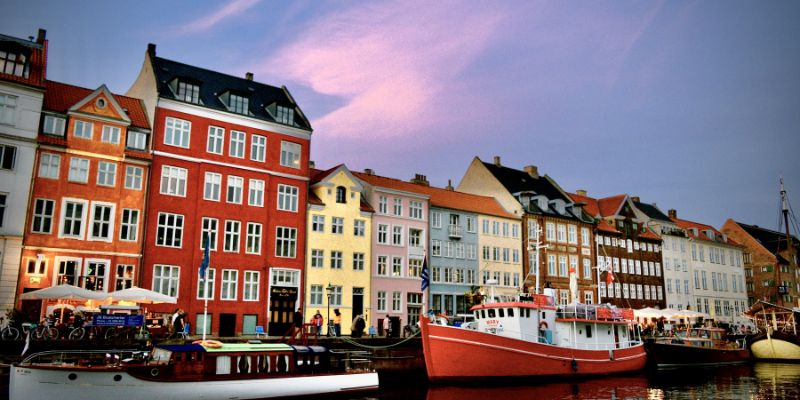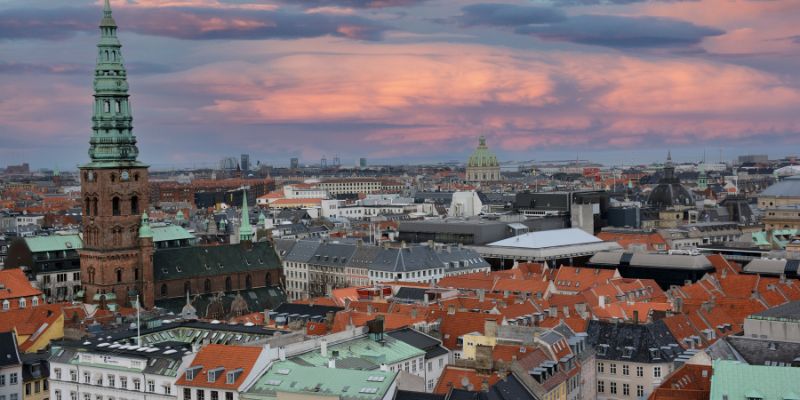Advertisement
Denmark is a small country in northern Europe, sandwiched between the Baltic and North Seas and sharing borders with Germany. Compared to its Scandinavian neighbors, the Nordic country is the tiniest and most southern. The Danish Archipelago comprises around 406 islands, and only about 70 are inhabited by Danes.
It is one of the most convenient tourist spots in all of Europe. While its compact size makes moving about easier, Denmark has maintained a giant's mentality for at least a millennium, packing as many interesting attractions as a much larger nation into a much smaller one.
The relaxed nation boasts several cultural and historical landmarks designated as UNESCO World Heritage Sites. Denmark is a gourmet's dream, with cuisine on par with the best in the world. Start arranging your ideal trip to Denmark with the help of our comprehensive travel guide.

History of Denmark
Nomadic hunters have left their imprint on Jutland over the last 250,000 years, but it wasn't until AD 500 that a group from Sweden named the Danes came south and dubbed the territory Denmark. The country's advantageous location in the north paved the way for further Viking expansion.
Brave fleets sailed to Europe and Canada, where they invaded and plundered until they finally conquered England in 1018 under King Knud (Canute) 's leadership (995-1035). The Vikings' dominance waned as medieval Europe strengthened its defenses after the British invasion.
Sweden, Iceland, Greenland, Norway, and the Faroe Islands became part of Denmark during Valdemar IV's reign (1340–75). Denmark lost Norway in 1814 and Iceland in 1943, but Sweden declared independence in the mid-15th century and fought it for the following several centuries. Both the Faroe Islands and Greenland are autonomous provinces of Denmark.
Green Nation - Denmark
The Danish Parliament has reached bipartisan agreements on ambitious energy and climate policy for many years. The local landscape was frequently considered during the construction of new buildings in Denmark. By 2050, Denmark aims to be one of the first countries in the world to no longer rely on fossil fuels.
Denmark is also a major supplier of wind turbines, with Vestas being the industry leader. More than ten thousand km of bike paths make Denmark a popular cyclist destination. Copenhagen is one of the greatest cities in the world to explore on two wheels, and more than 40% of its people ride to work every day.

Living Costs And Food
Bed & breakfasts and low-cost hotels in Denmark may be found for 350 to 600 Danish kroner per night and typically have shared kitchens, free high-speed Internet access, and convenient locations. A hotel in the middle price category (750-1,200 Kr) will provide you with amenities like a private room with a microwave and refrigerator, cable TV, a bar and lounge area, free breakfast, and stunning city views.
The going rate for a room at an upscale hotel is between 1,300 and 2,300 Krona. Take advantage of the finest Danish hospitality, including luxurious suites, fitness centers, spas, and exquisite eating and nightlife. Leverpostej, a stew of pig liver, dairy, onions, spices, and Flaeskesteg, a roasted pig, are two of the country's most popular meals.
Vegans and vegetarians can enjoy traditional Danish fares like blue cheese or the ubiquitous shorebird. In the neighborhood of 100 Krones, you may have some café fare and a cup of joe. Restaurant lunches may be had for about 150 Krones. In general, a daily food budget of 340 Krona is reasonable.
Denmark Weather
Denmark is located in a relatively mild latitude range for a northern country. Denmark has pleasant weather all year round thanks to the country's location in the temperate climatic zone and the moderating effects of the west winds and the surrounding oceans.
While August is the warmest month, July boasts the hottest average nighttime temperatures. From January through August, the average daily high temperature varies from 2 degrees Celsius (35.6 degrees Fahrenheit) to 20 degrees Celsius (68 degrees Fahrenheit). It's likely to rain every day of the year, although snow is rare, even in the winter.
It's likely to rain every day of the year, although snow is rare, even in the winter. Due to its position at Europe's northernmost tip, daylight hours in Denmark may be somewhat variable. Winter days begin at 8 a.m. and end around 3:30 p.m., while summer days begin around 3:30 a.m. and end as late as 10 p.m.
Things To Do In Denmark
The Little Mermaid
Visiting Denmark without meeting one of its most recognizable icons would be a missed opportunity. The monument has been a staple of Copenhagen for over a century and is a major tourist draw. Please take advantage of the opportunity to see the bronze statue of this famous Hans Christian Andersen figure.
Tivoli Gardens
This park, which first welcomed visitors in 1843 and is still going strong, is the second-oldest amusement park in the world. This amusement park is unlike any other since it features a Chinese theater in the style of a peacock, a symphony orchestra, and other rides. It's recognized for being calmer than other amusement parks but boasts attractions like "The Demon," a rollercoaster with no floor so riders' legs dangle.
Nyhavn
Many visitors to Denmark include this waterfront area from the 17th century on their "must-see" lists. Spend a few hours exploring the rich history of Copenhagen, which is reflected in the city's colorful architecture and plenty of pubs and restaurants. You may join a guided tour that stops in Nyhavn or explore independently.
Conclusion:
When compared to other countries, Denmark ranks highly. The coasts, little cities, and lovely parks here are all worth exploring. Despite a lot to see and do, few visitors go beyond the city. As a result, you'll have the nation to yourself for much of your travels.
Advertisement

Understanding the Temple of Literature Hanoi

The Hardrock famous Cafe

Exploring the Independence Palace: A Key Ho Chi Minh City Attraction

Guide to the Glowing Beach in Maldives: When and How

The Top Taiwan Bubble Tea Brands to Try

Understanding Taipei 101's Significance

The Best Resorts in God’s Own Country, Kerala

A Historic Stay in the Heart of Ho Chi Minh City

The Transformative Power of Travel on Your Personality and Health

Most Charming Small Towns in Sweden

Big Bus Sydney Hop On Hop Off Tour: An Overview
